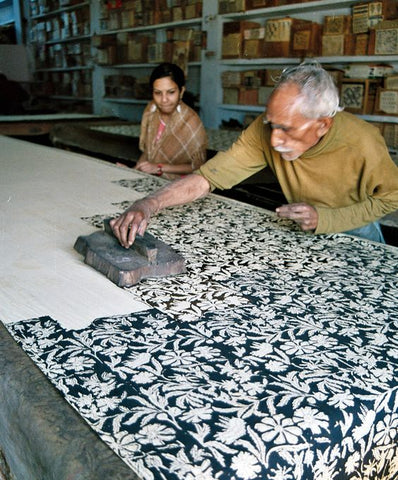Block printing and natural dyeing of bagru jaipur rajasthan .
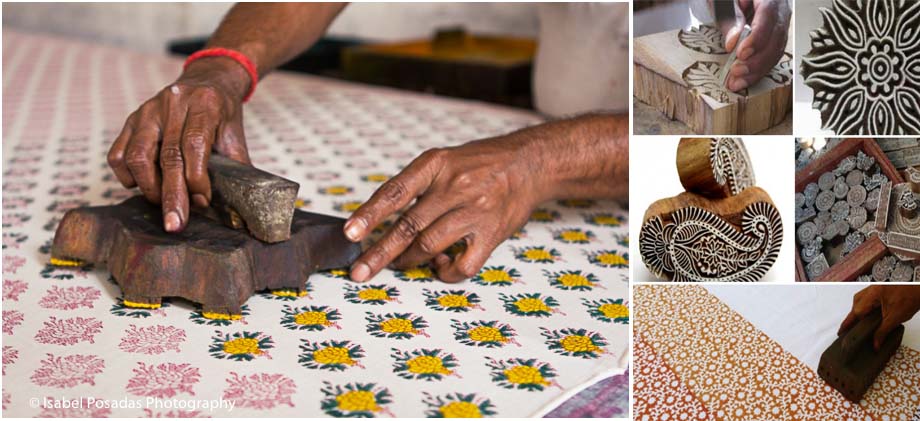
Introduction of bagru print
The bagru print is the world famous print of jaipur rajasthan .
The bagru prints in the past have been mainly used by the local population , particularly by the females .
Now days its very popular in international market as well as indian market .
mostly in bagru print use natural colours sources from tree and flowers and many more other source .
Patterns in rich colours .
like indigo blue , alizarine red , iron black and bright yellow colours were produced on coarse cotton cloth by indigenous processes of dyeing and printing .
resist pastes , natural dyes, khar earth from the bank of the river flowing nearby and the excreata of the animal were use as wooden blocks .
in building up pattern , geometrical forms .everything seemed to be inspired from local sources .
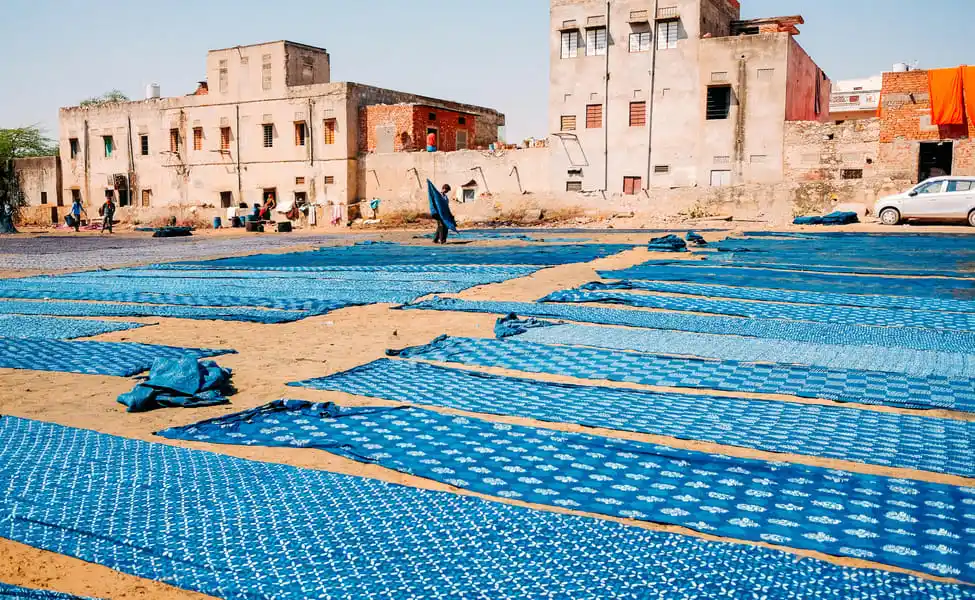
Even though centuries have gone by , the same processes in bleaching , resists and their application , the processes and their sequences have undergone little changes .
the style and motifs have been adapted to some extent to the changing markets .
Besides giving a brief historical note ,the monograph deals separately with technology ,operational techniques and sequences , material , styles , motifs , uses and the socio – economic condition of the people involved .
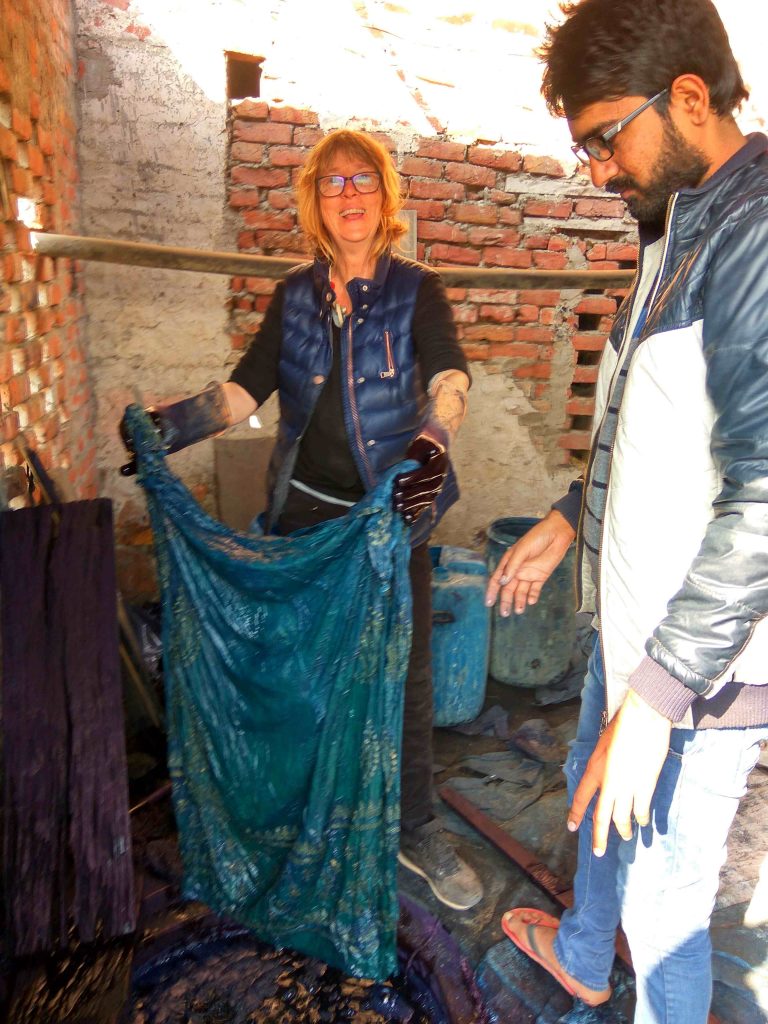
HISTORY OF BAGRU PRINT
Bagru is a small village in jaipur rajasthan . bagru is 30 km far from jaipur pink city .
bagru print is a traditional process of handblock printing on textiles with rich natural colours have been known from many centuries .
With the attraction of foreign buyers for the traditional hand printing textile .
the village hums with much activity today , supplying exquisite printed materials for the export trade .
and all kind of textile fabric like cotton , silk , khadi , chiffon , linen any many more fabrics . The hand block printers known as chhipas .
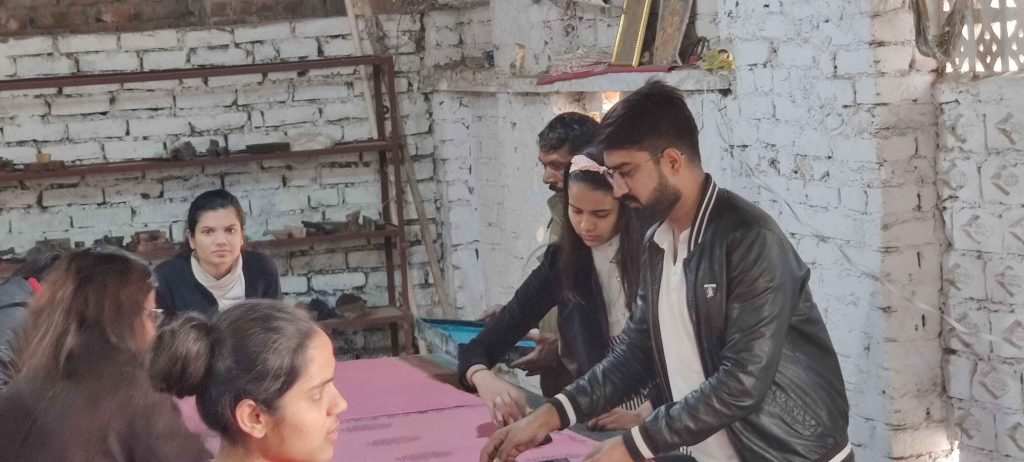
The chhipa community doing hand block printing with natural dyes and colours past 300 years . according to the legend .
some families of chhipas were brought by the thakur of bagru to settle in bagru .
after that so many chhipas family comes to bagru form different different places from india.
They perhaps came for the then royal patronage but more for the abundant availability of water, which hand excellent properties suitable for dying and printing .
abundant flowing water for washing , processing etc . and clean sunny bed are the important requisites for printing ; and the sanjariya river , with its origin some 5 km form the bagru westwards , was then watering this village town and its water was surrounding the place then known as bagora island , from which the name bagru is perhaps derived .
it is interesting to find a printed narrative in the killa of the hereditary jagirdar of bagru .
the narrative was found in the frame but was unsigned. A portion of the narrative is given below .
The chief ( thakura) of bagru is the foremost noble in the jaipur state and occupies the first seat of the left hand of maharaja .
in the absence of the darbar from jaipur he has by custom charge of the city and the palaces and by hereditary right performs the bhait and other ceremonies in the place of his highness .
he is among the twelve kotharis of jaipur who claim descent from the great maharaja , prithiraj , the direct progenitor of the jaipur ruling house .
the little of adhiraj is hereditary in the family .
bagru is derived from bagora , the name of an island in a lake where the city was originally built , and is famous for its palmfans and chintz .
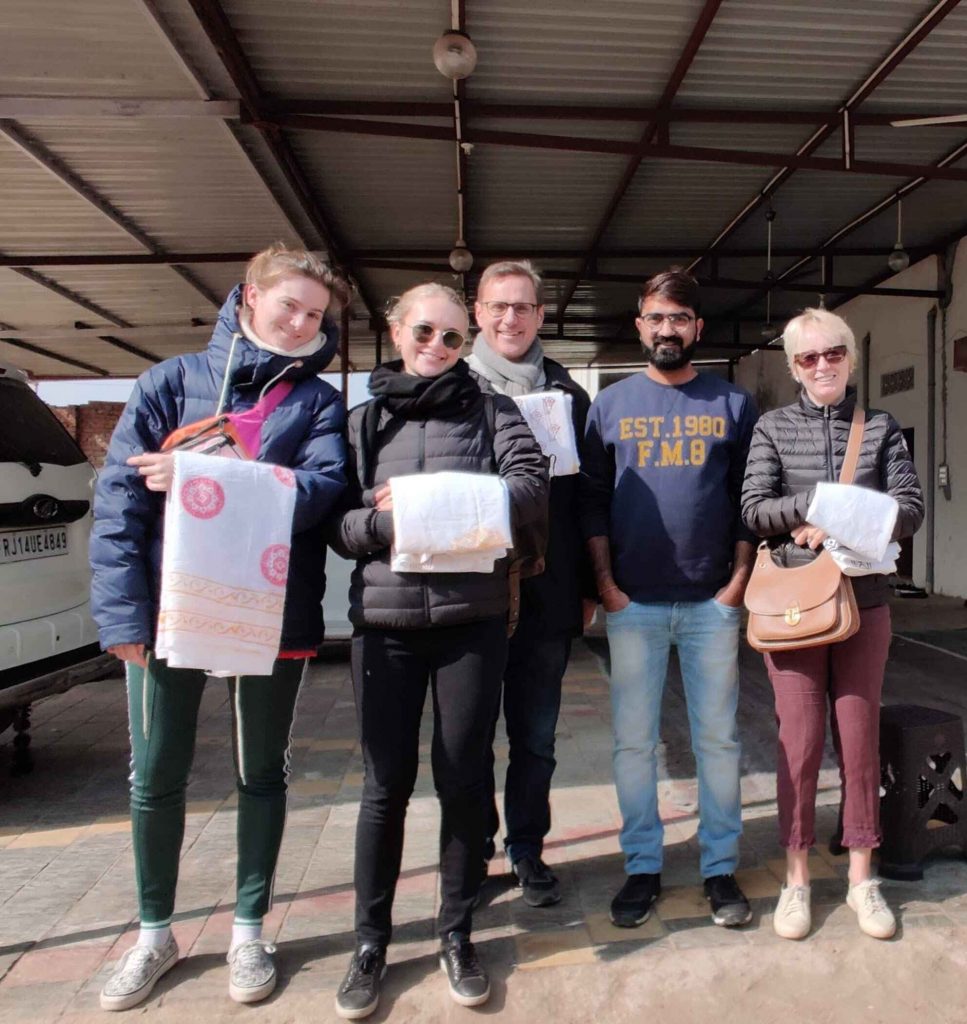
To day the sanjaria is not the perennially flowing river stream .
The colours for bagru print are prepared from natural dyes . The base color of bagru printed clothes is mostly off white .
The production pattern and the traditional motifs have however undergone a change .
the entire population of the chhipas then engaged on the production of the local varieties of printed fabrics .
mostly of the fadat , lugdis , angochhas , bichhaunis , rezais etc.
Is now engaged in the sophisticated production of running dress material , kaftans , salwar suits , chanderi silk saree and ladies salwar suits .
bagru printed bed sheets , kota doriya sarees , kota doriya suits , bagru printed fabrics , bagru printed dress material , bagru handblock printed suit sets , bagru hand block printed maheshwari silk sarees , handblock printed womens clothing , dabu print saree , dabu print salwar suits , bagru printed many more other products .
all the same the basic techniques and colours remain unchanged and unaffected through all these centuries and these make the bagru prints spectacularly different , distinctive and individual , and a highly specialised craft .
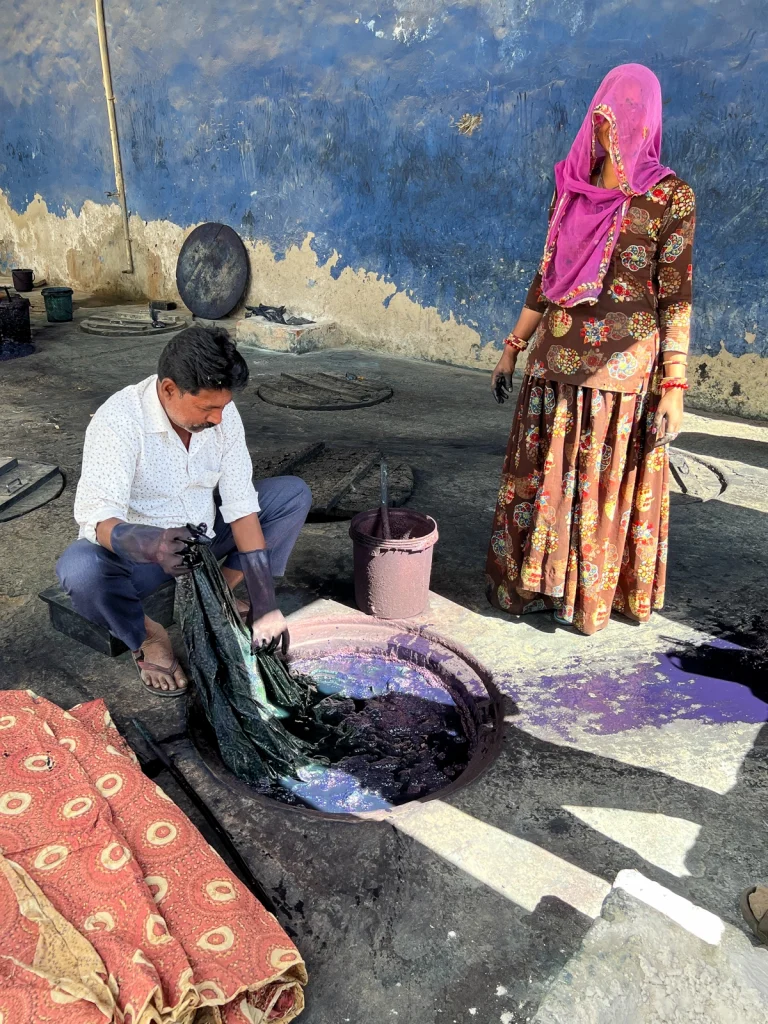
Although imitation of the technique and craft has been made elsewhere in the other printing centres .
yet bagru prints have retained their special appeal which is least sensed have in similar prints of the other centres .
this is attributed to the excellent qualities of the water in bagru .
Types of bagru hand block print
Bagru print colours
The bagru print are essentially in two colours red and black colours .
- Black colour –
- Red colour
Process of bagru print
The bagru printing use two colours: red and black . a few other colours sometimes used for printing .
Both red and black colours are make from chhipas community at home .
we will explain you colour making process in next blogs .
Red colour is called begar paste.
Black colour called syahi paste.
Both the syahi and bagar paste use for printing .
First washed the fabric .after that , it is treated with harda (myrobalan) to prepare it for
printing .
Harda dye ( pila karna solution ) the process immediately follows the de-sizing operation and is also known as harda karna .
each pieces of cloth is immersed in the harda solution .
in the pit and taken out of it squeezed and stretched open on the ground for dying .
colour of the fabric , this solution acts as a mordant for the syahi paste .
It is made of harda powder (chebulic myrobalan ) in water .
near the wells on the edges of the sanjaria river , holes are dag out to serve the purpose of tubs .
These holes are covered with a thin layer of cloth .
the harda powder and water are strained through the cloth to remove the suspended impurities .
Harda powder is mixed in the proportion of about 50 gms .
per meter of cloth . per 36 metres of cloth.
is added to the harda powder which is made into a paste and dissolved in water .


